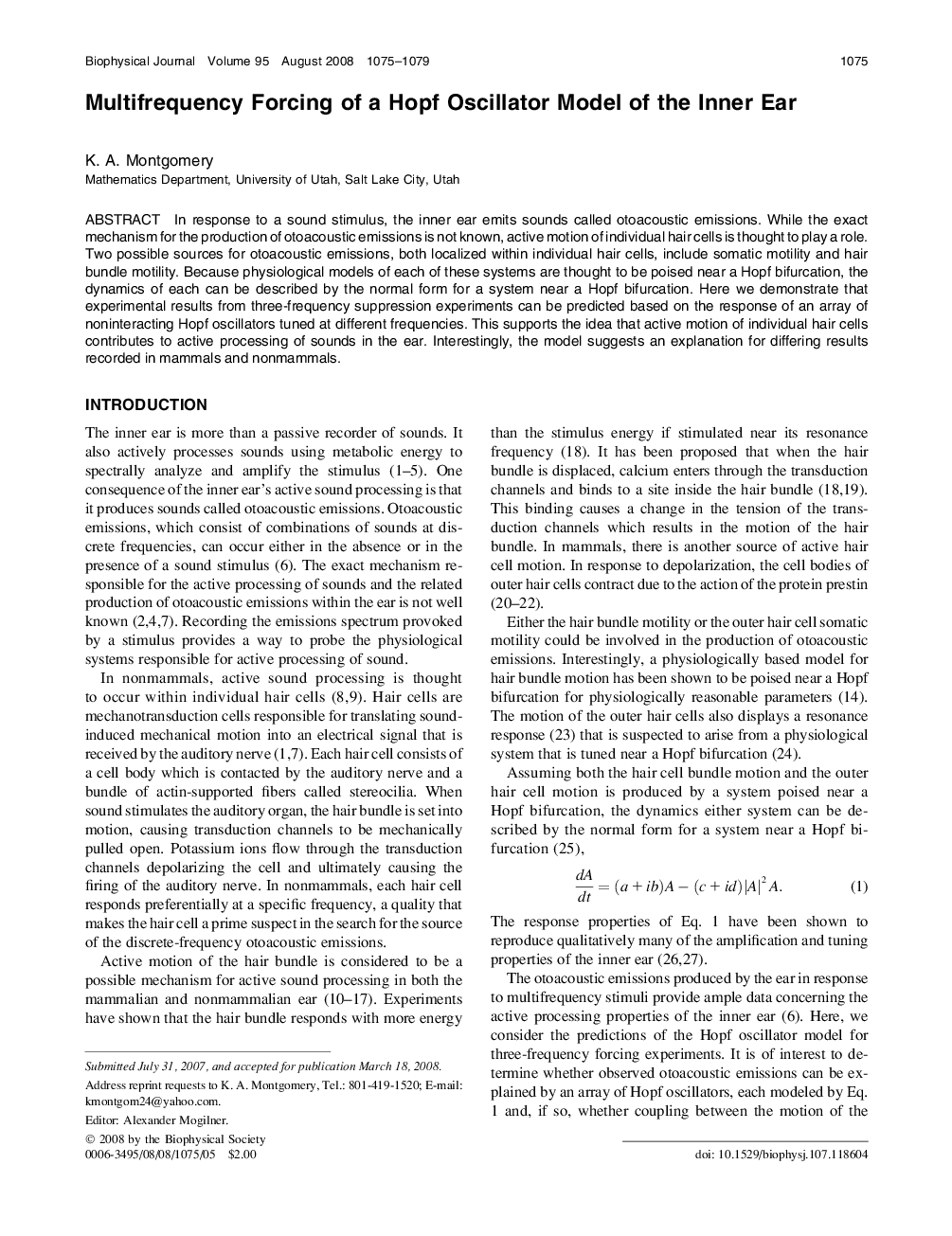| Article ID | Journal | Published Year | Pages | File Type |
|---|---|---|---|---|
| 1954887 | Biophysical Journal | 2008 | 5 Pages |
In response to a sound stimulus, the inner ear emits sounds called otoacoustic emissions. While the exact mechanism for the production of otoacoustic emissions is not known, active motion of individual hair cells is thought to play a role. Two possible sources for otoacoustic emissions, both localized within individual hair cells, include somatic motility and hair bundle motility. Because physiological models of each of these systems are thought to be poised near a Hopf bifurcation, the dynamics of each can be described by the normal form for a system near a Hopf bifurcation. Here we demonstrate that experimental results from three-frequency suppression experiments can be predicted based on the response of an array of noninteracting Hopf oscillators tuned at different frequencies. This supports the idea that active motion of individual hair cells contributes to active processing of sounds in the ear. Interestingly, the model suggests an explanation for differing results recorded in mammals and nonmammals.
